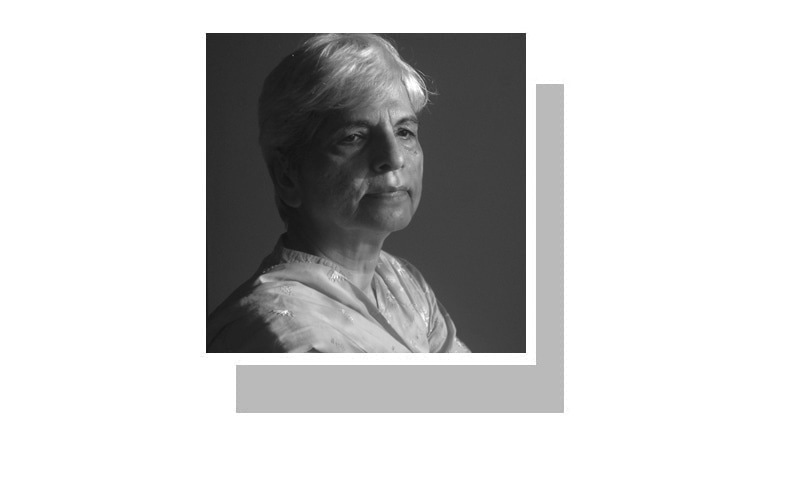“A COUNTRY that has an atom bomb; whose armed forces have the most sophisticated and costly weapons; whose politicians are counted among the world’s richest men; also has underprivileged women who die in childbirth because their families cannot take a timely decision on when a woman in labour needs to be taken to a hospital.” These are Dr Sadiqua Jafarey’s words as quoted in Dr Shershah Syed’s recently launched book, Gulmohar. This publication is an account of the lives of the eminent couple, Drs Naeem and Sadiqua Jafarey.
Dr Sadiqua, a renowned gynaecologist and obstetrician, is most concerned about the horrendous number of maternal deaths in Pakistan.
I call her up to ask her to elaborate what she is quoted as having said. She attributes maternal mortality to the delay in taking a woman to hospital when complications set in during childbirth. This is not always due to non-availability of transport or the hospital being too far from where the woman resides. The reason is simply lack of awareness, she adds. Who is to blame? “Everyone,” she says promptly.
That is what it amounts to when the status of women is low as it is in Pakistan, I believe.
This has been very distressing for Dr Jafarey who has spent a lifetime trying to save mothers’ lives. As head of the gynae department of the Jinnah Postgraduate Medical Centre, she tells me her morning meetings focused on the DOA (dead on arrival). “I believe no mother should die if she receives proper prenatal care and is referred to hospital care promptly in case complications set in during childbirth.” Hence for her it was important to address the training of midwives and birth attendants.
Political will to address reproductive health issues is lacking.
What I found remarkable about Dr Sadiqua was her interest in exploring the problems of women so that she could find solutions for them. Several years ago, I was investigating the phenomenon of bodies of newborn infants being recovered from garbage bins practically every day and being taken away by the Edhi Foundation to be given a decent burial. I planned to visit the Edhi office. I wanted a midwife to accompany me as she would enrich the interview. I called up Dr Sadiqua and asked her to suggest a midwife who was accomplished. She at once responded that she would come herself personally and bring with her Imtiaz Kamal, the most eminent midwife in Pakistan. I was touched by her interest in the issue I had brought up.
As the chairperson of the National Committee on Maternal and Neo-Natal Health (NCMNH), she has been instrumental in arranging research and awareness-raising projects for various organisations. In one area, she has made a dent. The maternal health survey held in 2019 shows a decline in the maternal mortality rate in Pakistan. From 276 per 100,000 live births in 2012 the MMR went down to 186 in 2019 due to more births being attended by skilled birth attendants.
A lower MMR means lower neo-natal and infant mortality rates. That makes it easier to persuade couples to space their children and opt for smaller families.
The demographic data for Pakistan is still very discouraging. The NCMNH very kindly provided me the statistics from reliable sources. They are disquieting. The population growth rate which was declining has again increased and is now 2.4 per cent and the country’s population is now estimated to be 231.4 million. It was said to be 208m in the disputed 2017 census. The total fertility rate (that indicates the average number of children a married woman of reproductive age has) stands at 3.6, up from 3.5 in 2020. The contraceptive prevalence rate for modern methods has remained 25pc for several years. This naturally makes one wonder what is going wrong. Won’t our main problem — a rapidly growing population — ever be resolved, enabling Pakistan to make progress?
The fact of the matter is that the government lacks the political will to address the issue seriously. Take the Sindh Reproductive Healthcare Rights Act approved by the provincial assembly in 2019. It is a perfect law with all the right provisions. True, it is applicable only in the province. But like all other laws, the Reproductive Healthcare Rights Act is not implemented actively. Disaggregated provincial data shows that Sindh lags behind in the demographic field. So what next?
We need the governments in all provinces, who speak loudly of the dangers of population explosion, to take the initiative and send trained personnel who actually go from house to house to motivate people to create a demand for family planning. They should have trained counsellors who actively provide the services of guiding would-be acceptors in the choice of contraceptives. If this had been happening, we would not have to bear the huge burden of unplanned pregnancies of over 2m every year.
Published in Dawn, December 30th, 2022












































